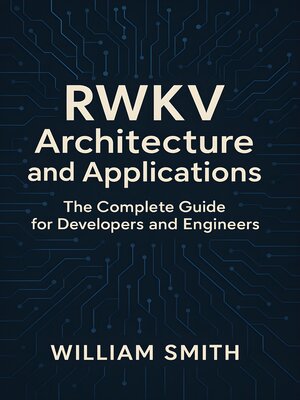RWKV Architecture and Applications
ebook ∣ The Complete Guide for Developers and Engineers
By William Smith

Sign up to save your library
With an OverDrive account, you can save your favorite libraries for at-a-glance information about availability. Find out more about OverDrive accounts.
Find this title in Libby, the library reading app by OverDrive.



Search for a digital library with this title
Title found at these libraries:
| Library Name | Distance |
|---|---|
| Loading... |
"RWKV Architecture and Applications"
"RWKV Architecture and Applications" presents a thorough, state-of-the-art examination of the RWKV neural network architecture—an innovative framework that unifies the strengths of recurrent and attention-based sequence modeling. The book begins by exploring the historical context of sequence models, tracing the evolution from RNNs and LSTMs through Transformers, and highlighting the conceptual breakthroughs embodied in RWKV. Key mathematical foundations and architectural design principles are dissected, offering readers a rigorous understanding of the unique mechanisms that set RWKV apart from traditional approaches, supported by comprehensive theoretical insights and comparative analyses.
Delving into the practicalities, the book guides readers through the internals of the RWKV architecture, from the mechanics of individual cells to efficient deep stacking, normalization, and memory optimization techniques. It provides advanced strategies for training RWKV models at scale, including state-of-the-art optimization, distributed learning, and robust handling of long sequences. Thoughtful discussions on benchmarking, evaluation protocols, interpretability, and troubleshooting ensure that practitioners are well-equipped to assess and refine their models in both research and production settings.
Beyond foundational theory and engineering, "RWKV Architecture and Applications" showcases the versatility of RWKV across a wide spectrum of real-world domains—from natural language processing, sequence-to-sequence transduction, and dialogue systems, to time series forecasting, signal processing, and resource-constrained deployments. The book addresses responsible AI concerns such as security, privacy, bias mitigation, and compliance, while its final chapters illuminate the latest research frontiers, multimodal fusion strategies, and open challenges in RWKV development. Written for engineers, researchers, and practitioners, this comprehensive work is an indispensable resource for harnessing the full potential of RWKV in modern AI.







